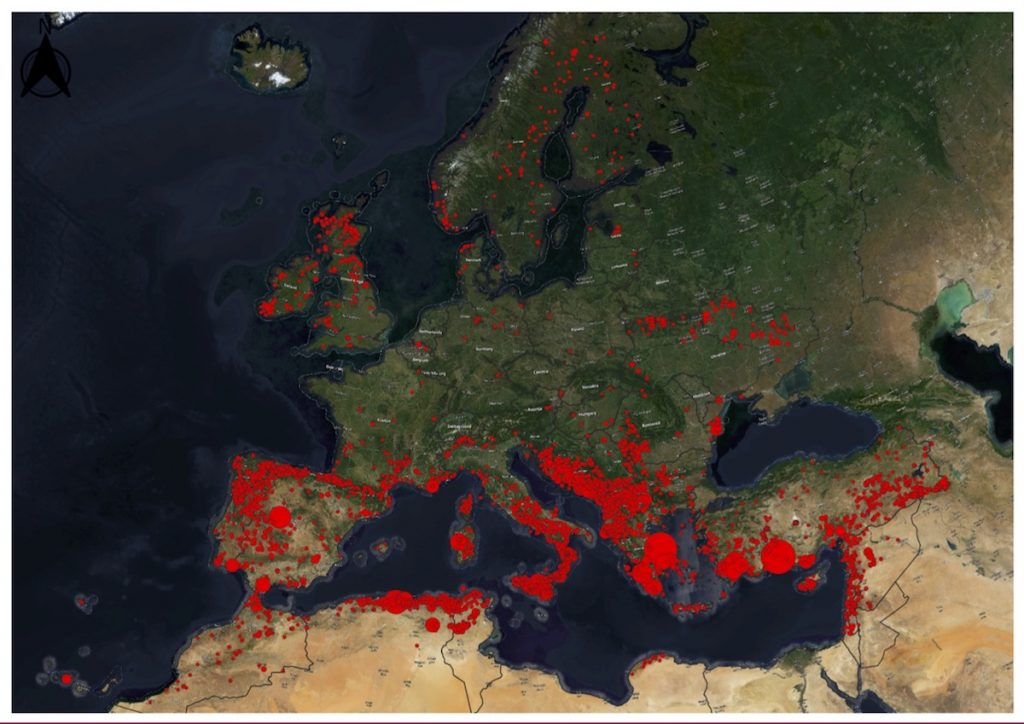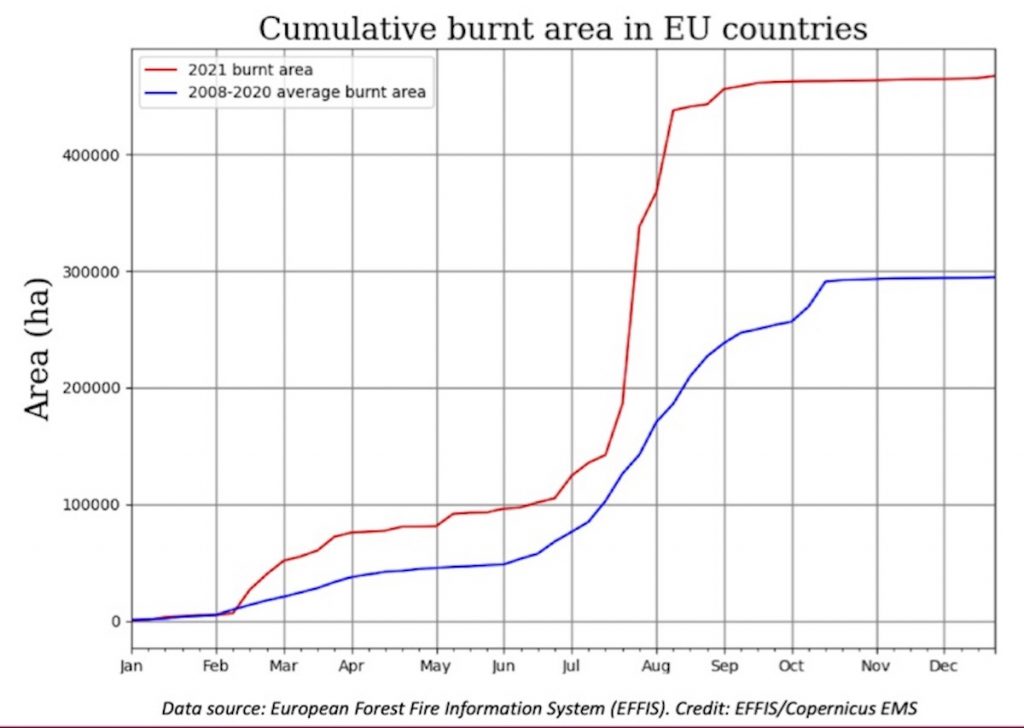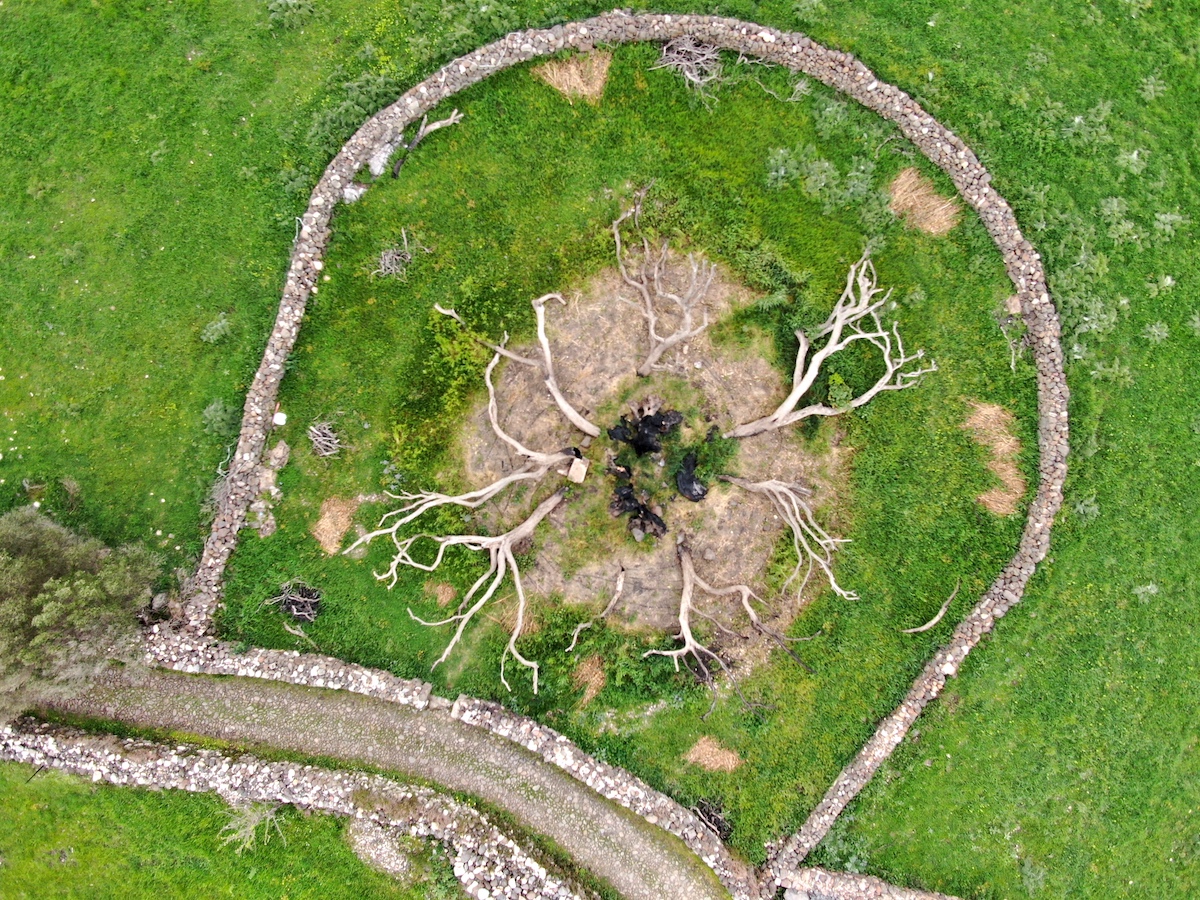Introduction
Looking at the map of the depopulation in inland areas of the Mediterranean, one can see that it overlaps to a large extent with the map of forest fires recorded by satellites. This is nothing new for researchers working on fires and climate change: the relationship between the two phenomena is well known. Yet it would not be correct to attribute causality without considering other factors. To understand the relationship between fires and rural exodus, we went to the sites of the most devastating fires of summer 2021 in Spain, Italy, Greece and Cyprus.


Discover the investigation, including this story
Part 1. Italy and Greece: friendly fire and enemy fire
Sa Tanca Manna, the thousand-year-old olive tree symbol of Cuglieri, was a source of real pride for local people. Sixteen metres tall and ten metres wide, the tree was considered the progenitor of all the olive trees in this corner of northwestern Sardinia known for the quality of its oil. It was an example of botanical archaeology. The tree died last summer, victim of a brutal fire that swept through the Montiferru countryside, burning more than 20,000 hectares of land and bringing the entire local economy to its knees.
"The flames destroyed more than half of our olive trees, and last autumn's harvest was so poor that we produced less than half of the previous year's crop," says Laura Cocco, 26, manager of the Peddio oil company, which was among the many businesses that suffered heavy losses. "Many have been replanted, but it will take years, perhaps decades, before the trees are as productive as they once were."

The Montiferru fire was one of many that ravaged Italy last summer in what was the hottest year ever for the country. Four times the forest area was destroyed compared to the previous decade's average. Things were no better in the rest of Europe. According to Effis, the European Forest Fire Information System, more than half a million hectares of land went up in smoke in the European Union in 2021, the second worst figure ever recorded on the continent. The Mediterranean region suffered the most.
Yet, if one looks at the overall picture, the number of fires on the northern side of the Mediterranean has decreased in recent decades. What has increased are what are called mega-fires, i.e. those covering an area of more than a thousand hectares. The appearance of this new generation of fires is closely linked to ongoing climate change, which in the Mediterranean region is creating weather conditions favourable to fires. But the changing climate also interacts with another trend taking place throughout the Mediterranean region: expanding forests.
As recently as a century ago, when many European countries still depended on local timber to construct buildings and boats and infrastructure, forests covered only about 3 percent of the continent's land. Today the figure has almost quadrupled due to reforestation schemes, more efficient building materials, and urbanisation. In the Mediterranean area, where forests have expanded by about 28 percent since the 1990s, woodlands occupy 21 percent of the land area.
The increase has been particularly striking in Italy, where forests have grown by 75 percent in the last 80 years to cover almost half of the country. Many of these forests have reappeared in rural areas that have been gradually abandoned by humans and their farming and grazing activities. The municipality of Cuglieri, for example, has gone from 2980 to 2500 inhabitants in the last ten years, a population decline of 20 percent. In Italy there are 3805 municipalities – more than half of the total – where the average number of inhabitants has fallen by 22 percent. 44 percent of these are located in the south and on the islands, the same areas where fires have increased in intensity and frequency.
This is why, according to many experts, it is sometimes misleading to look at the number of hectares burned by fires each year as a measure to define good or bad forest management. Francisco Moreira, a forest-ecology expert at the University of Porto in Portugal, says that this paradigm partly contributes to the unprecedented fires we have been facing for the past few years. Faced with this new type of event, Moreira explains, the current strategy consisting essentially of the suppression of any and all fires is highly inefficient. It can lead to mega-fires which, once triggered, are all but impossible to contain.

For this reason, the researcher argues, it is necessary to "move from a logic of fire suppression to one of mitigation of fires’ negative impacts". Priority should be given to policies that can prevent the situations giving rise to the most devastating fires, rather than to investments in new aircraft or firefighting equipment. "One of the main challenges for Mediterranean forests is to ensure that the ecological benefits of rural exodus (such as reforestation and increased carbon dioxide uptake) are not outweighed by the negative effects of extreme fires."
According to Andrea Duane, a researcher specialising in fire management at the Centre for Forest Science and Technology in Catalonia, Spain, fire management needs to be designed to ensure that ecosystems function well. "It is crucial to understand the type and extent of vegetation and its structure in order to plan for a landscape that can absorb carbon dioxide and at the same time ensure that there are no risks for those who live in these places."
With the gradual abandonment of rural areas, forests have become crowded with shrubs and plants. These used to be cleared through grazing, through the collection of wood for fuel, and by small fires controlled by local inhabitants. This prevented any excessive accumulation of flammable organic matter. The end of these activities is coinciding with abnormal climatic conditions that make the landscapes a huge reservoir of fuel ready to ignite.
As forests come closer to inhabited areas, they are thus becoming a threat to homes and farms, putting further pressure on local people and the fragile farming economy. Moreover, Mediterranean forests are the habitat of three quarters of the land mammals of these regions, about half of the Mediterranean vertebrate species and almost 75 percent of the insects.
Devastated Euboea
The fire on the island of Euboea, Greece, set a record for size in that country, with …














